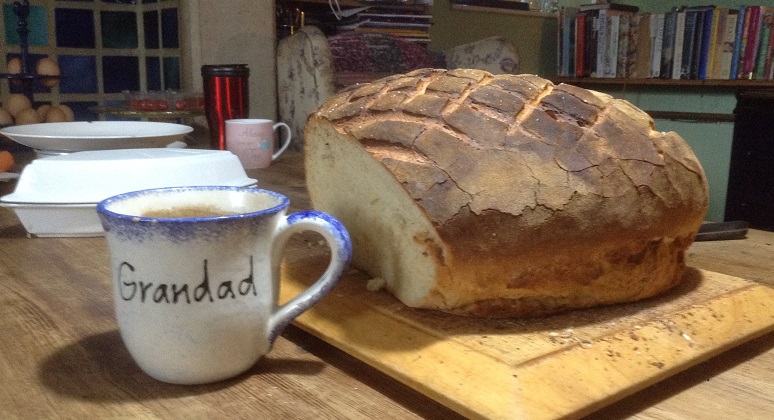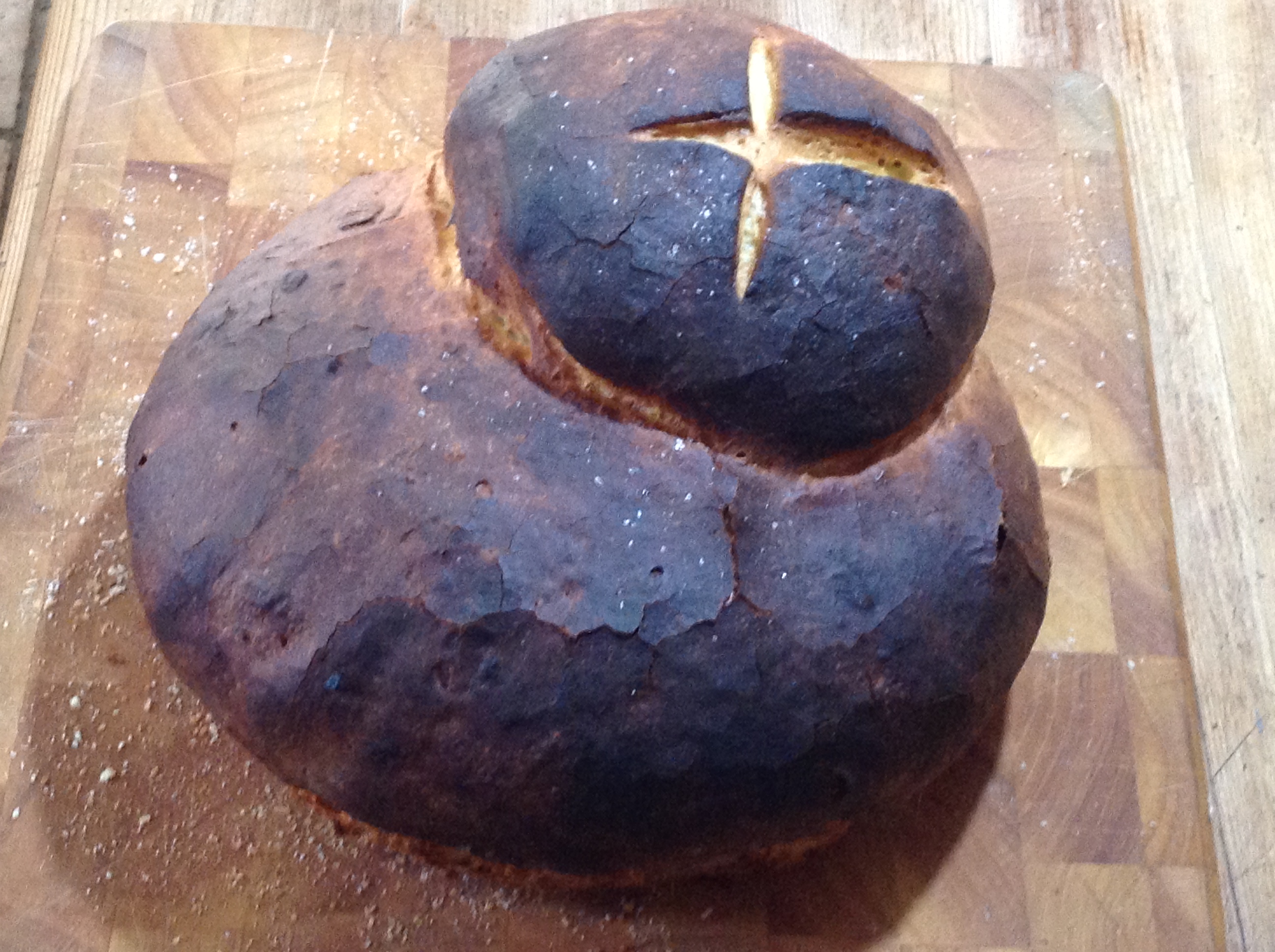Hand Brod Recipe

The image above shows a Hand Brod with a lot of family expected and this one has been sliced to show the inner colour and because one of my boys is a serious hot bread fiend. It's a big loaf, compare the Grandad Mug - what can't a dwarf be a grandwarf! It was a heavenly loaf and has now sadly passed.
The colour of this bread should have a tendency to the darker side, possibly a hint of black. This doesn't make it burnt, it makes it more like proper bread rather than the anaemic stuff that you can buy from any supermarket and most bakers. Unless any creatures get mashed into the dough, this bread is good for vegetarians. This recipe has been adapted from a dwarfish recipe found in The Book of Dwarf and the measurements have been upgraded for modern standards. The original used pig fat rather than olive oil (wishy washy elfish mischief). "A good hand scrape of yeast," has been substituted with 14g dried yeast . Sugar instead of honey. Plastic instead of a damp rag or cloth.
Ingredients
- 1000g bread flour
- 14g dried yeast
- 2 tsp salt
- 3 tbsp olive oil
- 2 tsp sugar
- 600ml blood warm water
- Freshly crushed sea salt
Method
Mix the flour and salt in a decent sized mixing bowl then make a well and add the yeast and sugar. Add the olive oil to the blood warm water and mix. Then knead on a lightly floured surface for about 5 minutes or until the texture is dough-like and pliable. Add more flour as you knead if the mixture is too sticky.
Place in a large, oiled plastic bag (a carrier bag will do). Set aside to prove in a warm place for about an hour or until doubled in size.
Knock back and shape as required. The traditional shape is roundish but there is no need to get too precious about it. Place on an oiled and floured baking tray and leave to rise, uncovered, for about 20 minutes.
Meanwhile,if not using an Aga or other similar range, preheat the oven to 240C/460F/Gas 9.
Lightly score the number of required divisions on the top (don't forget to add one for the Elder Gods, one for the ancestors and one for the unbidden guest to the number of expeted participants in the loaf) with a seriously sharp knife (dwarf, after all) and sprinkle with a little freshly crushed sea salt. Don't overdo the scoring, we're just marking it and the loaf will open up along the lines as it proves a second time: we're not looking to despoil the thing!
If not using an Aga or other similar range, reduce oven to 200C/400F/Gas 6 and then place in centre of oven (or the middle of the top oven in an Aga) and bake for about 20 minutes or until cooked. After 20 minutes check it but put it back in if the crust hasn't yet started to blacken a little. After about another 10 minutes remove from the oven and check that it is cooked by tapping the base of the loaf. If it sounds hollow it is ready.
Remove and leave to cool before cutting or the bread will mash up.

Observations
The image above is not technically Hand Brod but it demonstrates a good colour to the crust. A good dark crust will ensure that the bread is firm and lightly textured and the bread will keep fresh for two days if stored overnight in a plastic bag. If it lasts that long
Source: The Book of Dwarf
